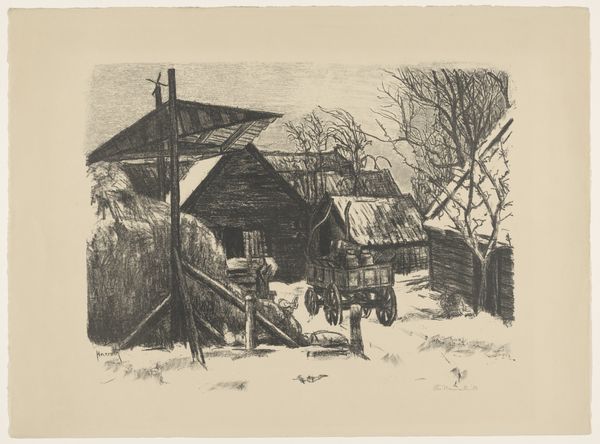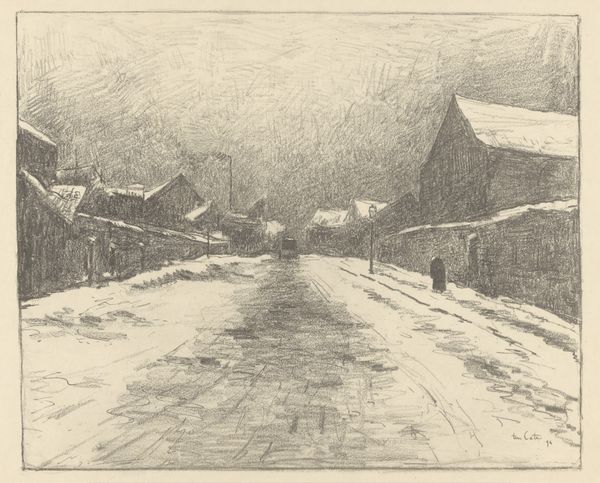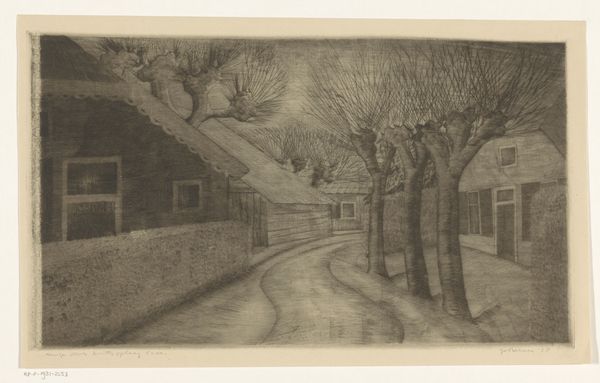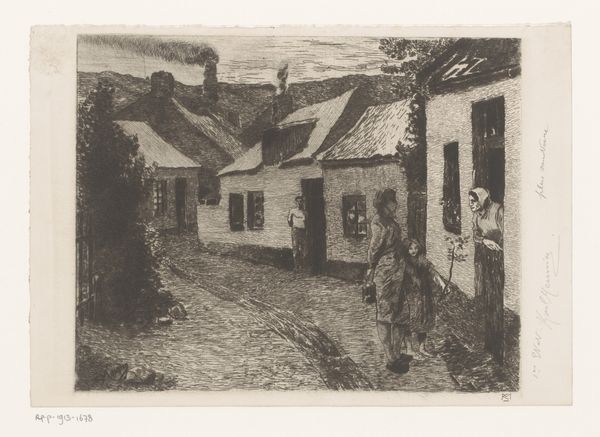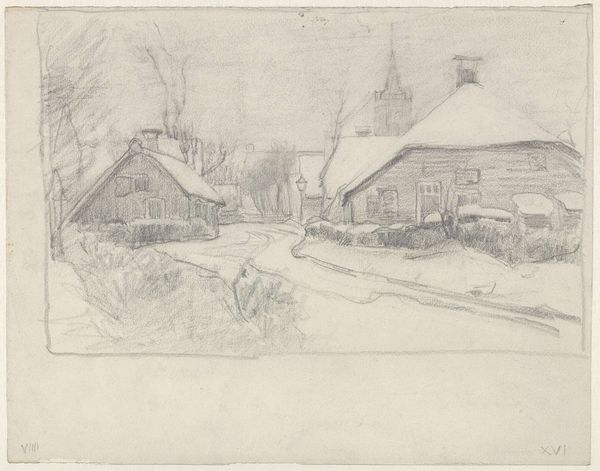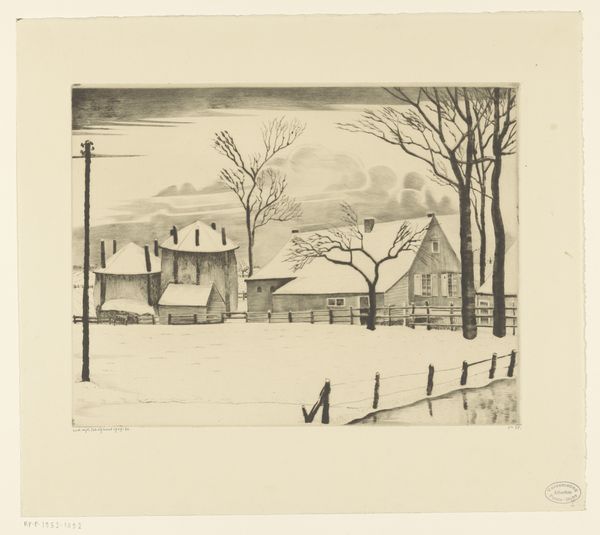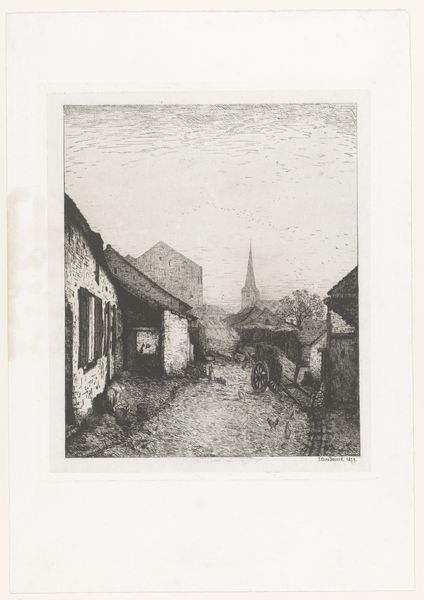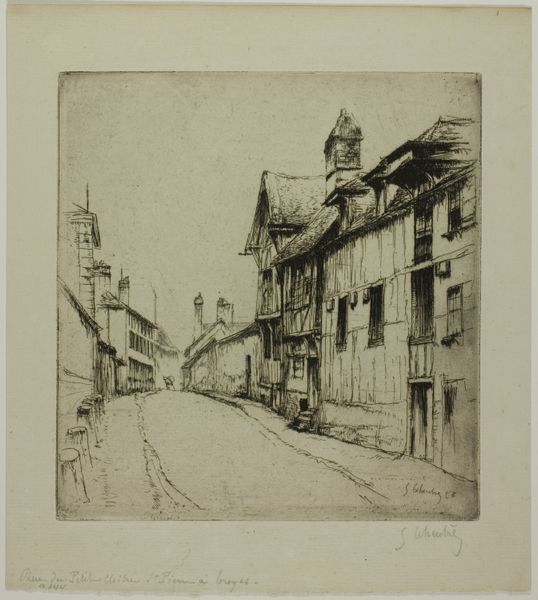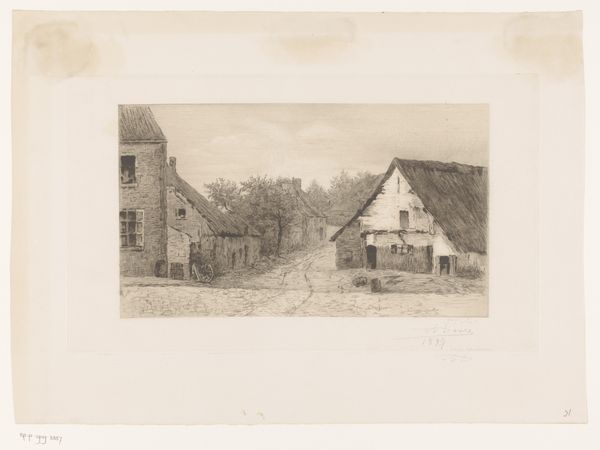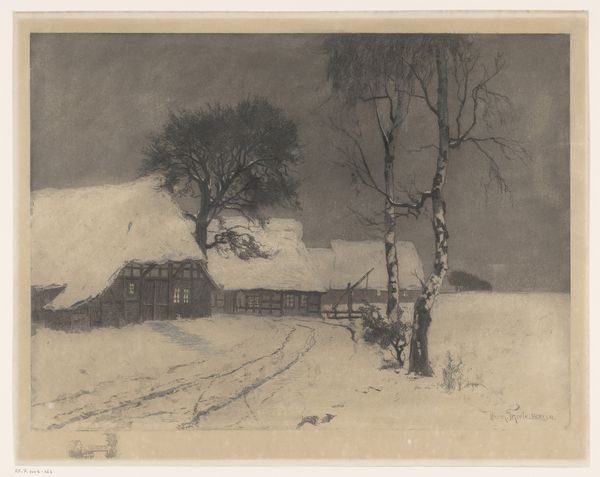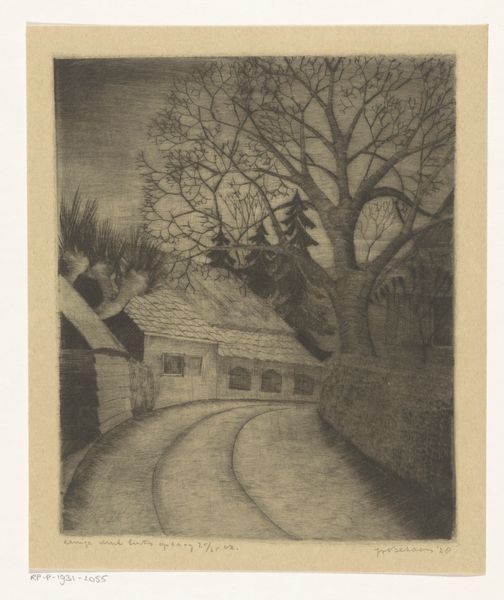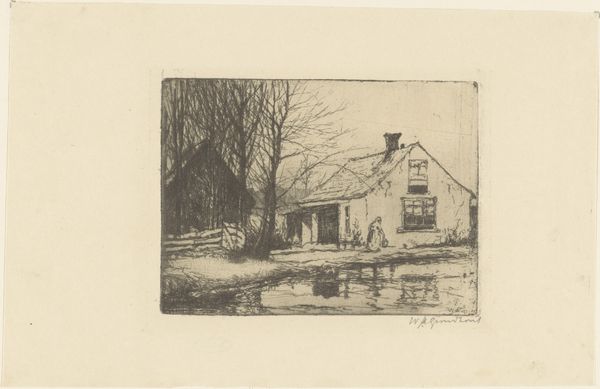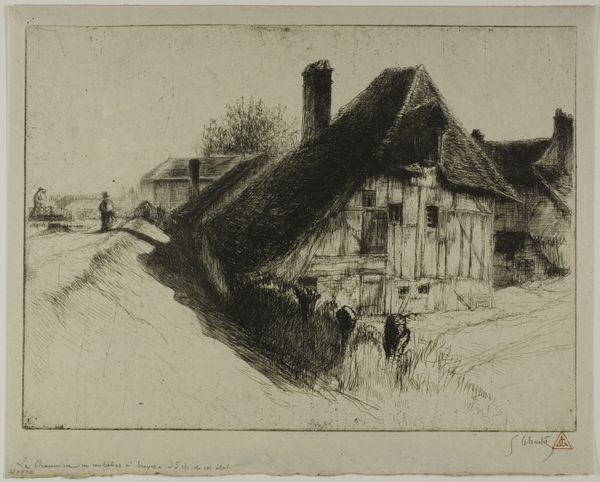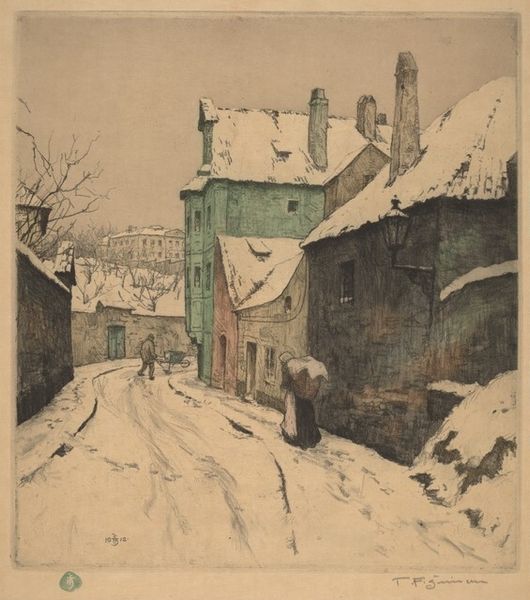
print, etching
#
snow
#
dutch-golden-age
# print
#
etching
#
landscape
#
cityscape
#
realism
Dimensions: height 317 mm, width 370 mm
Copyright: Rijks Museum: Open Domain
Willem Witsen created this etching of snow-covered houses in Ede during the late 19th or early 20th century. It’s a scene of quiet domesticity, rendered in a style that reflects the artistic currents of its time, but how might we understand the image in its wider context? Witsen was part of a group of Dutch artists who reacted against the prevailing academic style, turning instead to scenes of everyday life. Here, the snow lends a certain stillness, emphasizing the simple structures of the houses and the solitary figure in the doorway. The etching medium itself, with its emphasis on line and tone, was increasingly popular among artists seeking a more direct and democratic form of expression, outside of the traditional art establishment. Was Witsen making a statement about the value of the ordinary, in opposition to the grand narratives of academic painting? To understand the social implications of Witsen’s work, we might look to period writings on Dutch art and culture, exhibition reviews, or even census records to learn about the lives of people in Ede. Only then, can we start to appreciate the painting’s place in a broader social and institutional history.
Comments
No comments
Be the first to comment and join the conversation on the ultimate creative platform.
